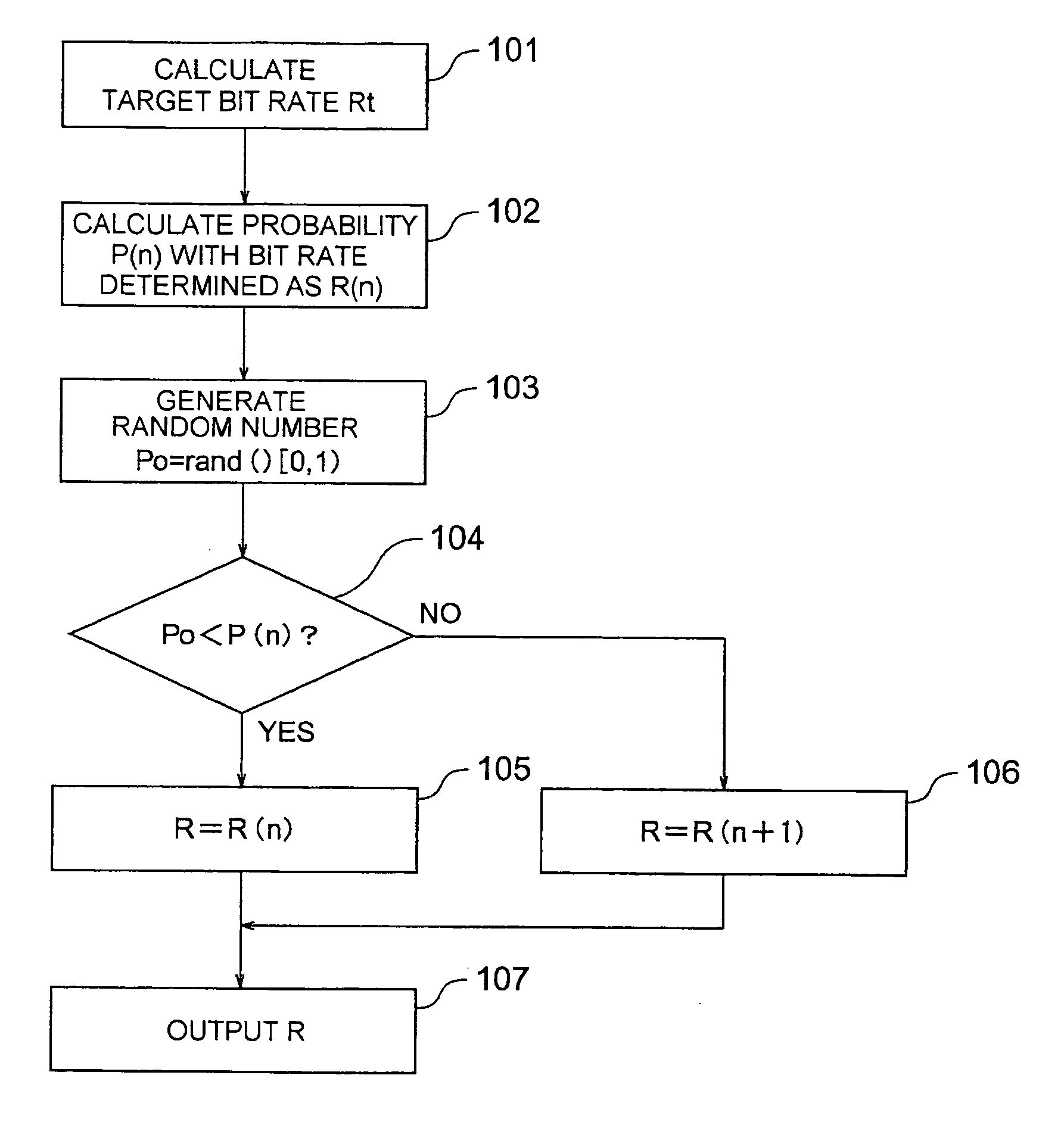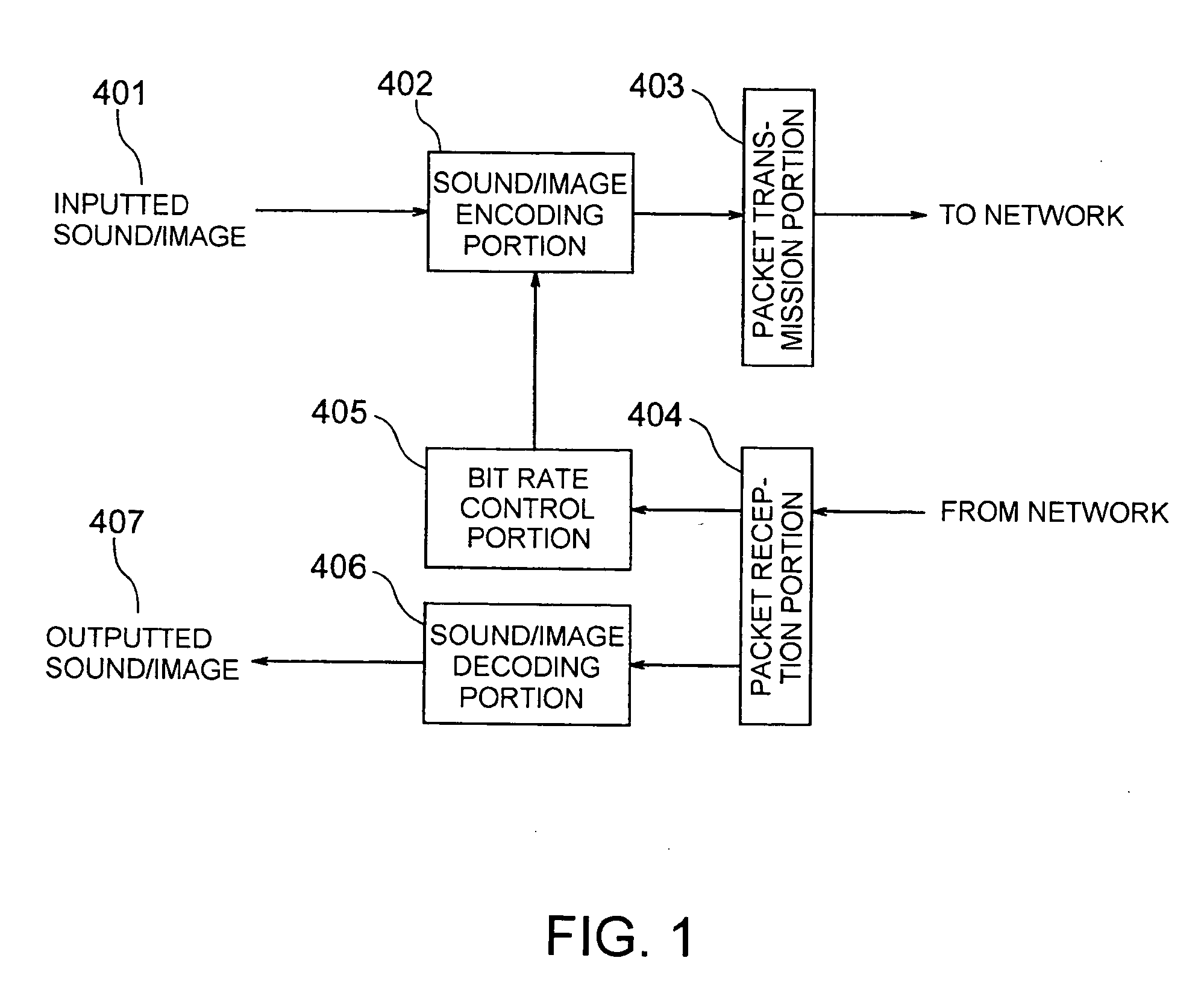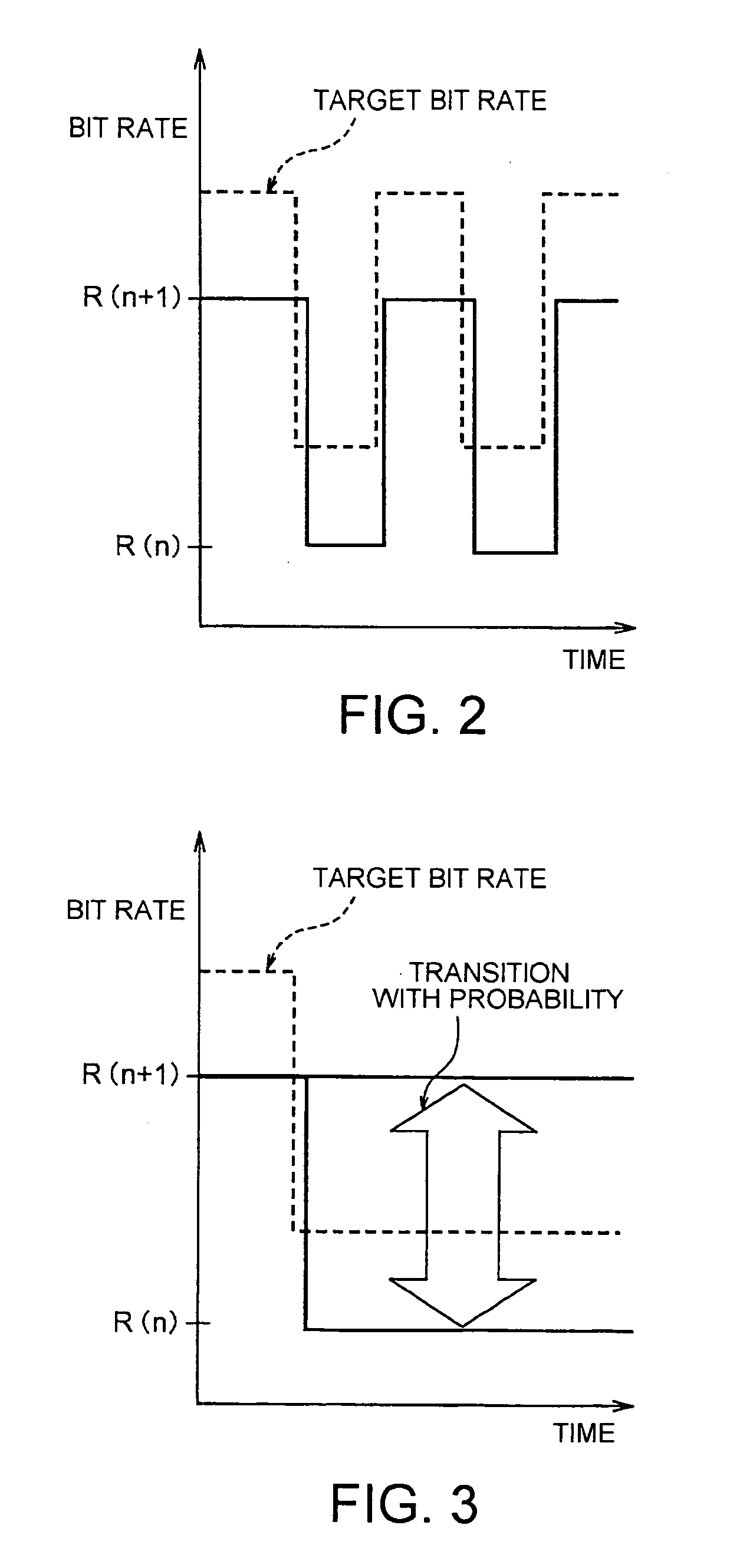Bit rate contol method and device
a technology of bit rate control and transmission method, applied in the direction of transmission monitoring, data switching network, selective content distribution, etc., can solve the problems of increasing not producing the increase in the load on the call control, and difficult to increase the utilization efficiency of the network, so as to suppress the quality of real-time communication
- Summary
- Abstract
- Description
- Claims
- Application Information
AI Technical Summary
Benefits of technology
Problems solved by technology
Method used
Image
Examples
first embodiment
(1) First Embodiment
[0056]FIG. 4 is a flowchart showing a bit rate control according to a first embodiment of the present invention. First, a target bit rate Rt is calculated by using a TCP-friendly control or the like based on the conventional AIMD or TFRC (step 101).
[0057] n with which R(n)≦Rt1) can be achieved is obtained with respect to this Rt, and a probability P that a transmission bit rate becomes R(n) is calculated by using such an expression as that the probability is increased as Rt is close to R(n), e.g., an expression (2) (step 102).
P(n)=(R(n+1)−Rt) / (R(n+1)−R(n)) (2)
[0058] It is to be noted that the probability P(n) can be also determined by retrieval using a table storing corresponding relationships between the target bit rate Rt and the probability P(n) as specific numeric values. In any case, such an expression or table is stored in a memory as change probability generation information in advance.
[0059] Then, a bit rate judgment based on the probability P(n) is ...
second embodiment
(2) Second Embodiment
[0063] In a second embodiment according to the present invention, the bit rate change probability is determined in dependent on a difference between a current transmission bit rate and a target bit rate, and the bit rate can be changed to only adjacent bit rates in this case in order to avoid large fluctuations in transmission bit rate.
[0064] 2. 1) Control Flow
[0065]FIG. 5 is a flowchart showing a bit rate control according to the second embodiment of the present invention. First, a target bit rate Rt is calculated like the first embodiment (step 101), and a judgment is made upon whether the target bit rate Rt is smaller than a current transmission bit rate R(n) (step 202). A judgment is made upon whether the transmission bit rate is decreased (bit rate decrease judgment: steps 204 to 207) if it is determined that Rt is smaller (YES at the step 202), and a judgment is made upon whether Rt is equal to the current transmission bit rate R(n) (step 203) in other c...
third embodiment
(3) Third Embodiment
[0096] In a third embodiment according to the present invention, a transmission bit rate is changed in accordance with a packet loss like the operation in AIMD. By making a judgment based on a probability when changing a transmission bit rate, the TCP-friendly control can be realized even if a settable bit rate is discrete.
[0097] 3. 1) Control Flow
[0098]FIG. 8 is a flowchart showing a bit rate control according to the third embodiment of the present invention. In FIG. 9, presence / absence of a packet loss is first detected based on the number of losses of received sound / image packets or a packet loss ratio notified from an opposite side terminal (step 301), and a judgment is made upon whether there is a packet loss (step 302).
[0099] If there is a packet loss (YES at the step 302), a judgment is made upon whether a transmission bit rate is lowered (bit rate decreased judgment: steps 303 to 306). If there is no packet loss (NO at the step 302), a judgment is made...
PUM
 Login to View More
Login to View More Abstract
Description
Claims
Application Information
 Login to View More
Login to View More - R&D
- Intellectual Property
- Life Sciences
- Materials
- Tech Scout
- Unparalleled Data Quality
- Higher Quality Content
- 60% Fewer Hallucinations
Browse by: Latest US Patents, China's latest patents, Technical Efficacy Thesaurus, Application Domain, Technology Topic, Popular Technical Reports.
© 2025 PatSnap. All rights reserved.Legal|Privacy policy|Modern Slavery Act Transparency Statement|Sitemap|About US| Contact US: help@patsnap.com



